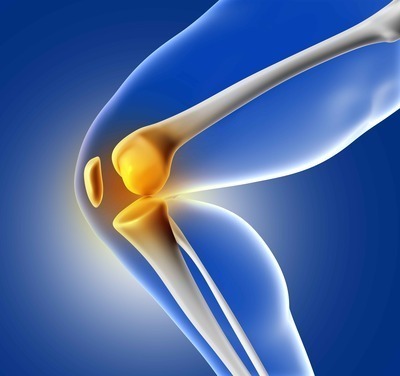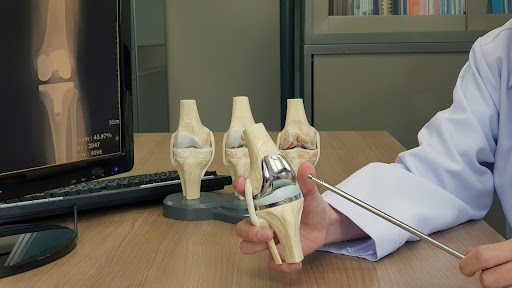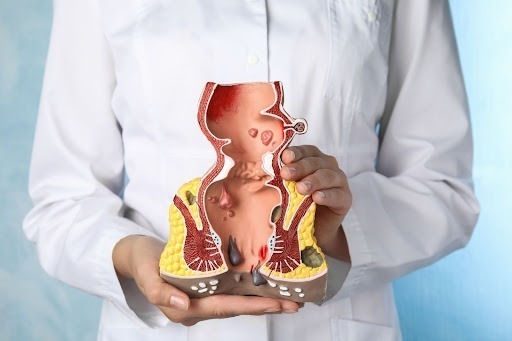Urology
Comparative Effectiveness of Shock Wave Lithotripsy and Ureteroscopy for Treating Patients With Kidney Stones

by admin
19th December 2023
8 minutes read
Introduction
Among many treatment possibilities for patients suffering from kidney stones, two of the primary options are the decision between Shock Wave Lithotripsy (SWL) and Ureteroscopy (URS). This blog will delve into assessments of each of the procedures and crate comparisons that weigh the efficacy and side effects of each. Important factors such as the size of the stone, the location of the stone, the patient’s health, and the side effect rates will be important to point out for optimization and effectiveness. It is important for both the patient and the healthcare provider to fully understand what may be expected with either procedure so that a well-informed decision may be made.
Understanding Kidney Stones
Kidney stones are hard deposits of minerals and salts that form in the kidneys. Dehydration and family history are among the factors that increase the chances of them occurring. Symptoms most often occur when stones pass down the narrow tubes connecting the kidneys to the bladder:
- Severe pain in the back and side
- Sharp cramping pain in the belly, below the ribs
- Pain that spreads to the groin or testicles
- Blood in the urine
- Frequent urination
- Cloudy or bad-smelling urine
For some people, the symptoms are less severe. Kidney stones are usually diagnosed by their symptoms alone. However, there are various tests that diagnose the stones themselves and check if there is damage to the kidneys from the stones. The symptoms listed above are not unique to kidney stones. If you have any of these symptoms, contact your doctor for kidney stone , and a general practitioner or nephrologist will decide on the correct treatment to follow.
How are Kidney Stones Managed?
Management of kidney stones is delivered through a combination of medical therapy and recommendations on lifestyle based on the size, type, and cause of the stone and patient’s overall health.
- Hydration: Keeping well hydrated can help to flush smaller kidney stones from the urinary system, particularly when someone drinks at least 2-3 liters of fluid per day.
- Pain Management: Over-the-counter pain medications, like ibuprofen (Advil, Motrin) or naproxen (Aleve), can be used for pain relief. In some cases, a prescription medication may be given for pain relief.
- Medical Therapy: Medications to help pass kidney stones are known as alpha-blockers. They relax the muscles in the ureter, which will make it easier for the kidney stone to pass.
- Dietary Changes: For some people, making changes to their diet can help prevent the recurrence of certain types of kidney stones. Drinking enough fluids each day is the best way to help prevent most types of kidney stones. Drinking enough fluids keeps your urine clear, and helps prevent the substances that cause kidney stones from becoming concentrated.
- Minimally Invasive Procedures: Shock Wave Lithotripsy (SWL), Ureteroscopy (URS), and percutaneous nephrolithotomy (PNL) are all commonly used techniques that remove smaller or larger stones in a less invasive approach.
- Preventive Measures: If you’ve had a kidney stone, preventing future kidney stones may be a top priority. The health care provider will perform a medical history, physical examination, and imaging to ensure that they are treating the correct ailment. Then, the provider will do a stone analysis, which will involve 24-hour urine collection to calculate the substances in the urine that may create certain types of kidney stones. This way, you can determine the proper next steps and prevent future stones with the proper medications or diet changes.
Regular follow-up and monitoring are crucial because kidney stones can always recur. The treatment plan is decided based on the patient’s particular case, stone composition, and if there is a chance that the stone will pass naturally.
What is Shock Wave Lithotripsy?
Shock Wave Lithotripsy (SWL) is a noninvasive outpatient-based medical procedure used to treat kidney stones. SWL works by delivering focused high-energy sound waves from outside of the body to break stones into tiny fragments. Once the stones are broken the fragments pass through the urinary system and get disposed of when the patient passes urine. This procedure does not involve any incision. Shock Wave Lithotripsy (SWL) is most effective for renal stones of urological size located in the kidney and upper ureter since it is most advantageous for treating someone in its early stages.
Understanding Ureteroscopy
Ureteroscopy is a procedure that diagnoses and treats kidney stones. During a ureteroscopy, a ureteroscope is passed through the urethra and bladder and then into the ureter or kidney. Once the stone is viewed, a laser fiber is advanced through the working port of the ureteroscope and delivers Holmium energy to break, or dust, the stone. Some larger stones may require the laser fiber to be passed through an accessory channel in a ureteroscope with a larger diameter, or by using an access sheath. Additionally, a ureteral stent is placed after the procedure, which is usually removed in a week by pulling the external end of the stent. Finally, this procedure is performed under general anesthesia and is successful in patients who have moderate to large impacts that are not expected to pass on their own.
Comparative Effectiveness of Shock Wave Lithotripsy and Ureteroscopy for Kidney Stones
Factors involved in the comparison of Shock Wave Lithotripsy (SWL) and Ureteroscopy (URS) in the treatment of kidney stones are:
- Stone size and stone location: Ureteroscopy (URS) is more effective for larger stones or stones located in the lower ureter, whereas Shock Wave Lithotripsy (SWL) is better for smaller, less dense stones, typically in the kidney or upper ureter.
- Success rates: URS generally has higher success rates during the first treatment session, especially for stones that are resistant to fragmentation. If the stone is going to eventually come out, usually it will do so in one or two visits with the URS. SWL may require multiple treatments to completely clear a stone.
- Invasiveness and recovery: SWL is a non-invasive procedure that has a short and immediate recovery time so a significant number of patients might like to first take more invasive options. URS while minimally invasive does require sedation or anesthesia and may require short hospital stays.
- Complications: SWL is less risky with less post-operative pain. URS has made significant advancements in reducing its complication rates although URS is generally viewed as the more invasive of the two options.
- Costs and availability: Varies by healthcare system and region. Costs of SWL and URS are variable, but in general, URS might be more expensive due to specialized equipment and possible hospitalization.
- Patient factors: Patient preference including medical condition and history of stone disease may all help guide the treatment choice. Obese patients may not do as well with SWL nor those with certain types of kidney anomalies.
- Recurrence and long-term impact: Some studies have suggested a slightly higher recurrence of stones after SWL than URS.
Conclusion
In conclusion, both Shock Wave Lithotripsy (SWL) and Ureteroscopy (URS) are two primordial treatments for kidney stones that have their own advantages. The decision between SWL and URS is variable based on stone size, stone location, patient health, and patient and physician preferences. SWL is a non-invasive treatment that allows a faster recovery time and is the best treatment option for smaller stones. As for URS, it has a higher success rate for larger stones, complex stones, or in cases where SWL is not feasible. The decision as to which type of treatment to use is influenced by patient-related factors and by the expertise of the physician and the operative team.
FAQs
1. Can Kidney Stones Be Prevented?
Yes, by staying hydrated, maintaining a balanced diet low in salt and animal proteins, and managing underlying health conditions. Your doctor might also recommend specific dietary changes or medications based on the type of stones you form.
2. How Long Does It Take to Pass a Kidney Stone?
The time it takes to pass a kidney stone varies, depending on the stone’s size and shape. Small stones often pass within a few days to a week, while larger stones can take longer and may require medical intervention.
3. Can Kidney Stones Recur?
Yes, kidney stones can recur. Patients who have had kidney stones have a higher risk of developing them again, but preventive strategies can reduce this risk.
4. Are There Different Types of Kidney Stones?
Yes. The most common types are calcium oxalate, uric acid, struvite, and cystine stones, each with different causes and treatments.
5. Does Gender Affect Kidney Stone Risk?
Historically, men have been more likely to develop kidney stones, but the gender gap is narrowing, with increasing incidence in women.
CATEGORIES
- ACL Reconstruction
- Anal Fissures
- Anal Fistula
- Appendicitis
- ASK A DOCTOR
- Benign Prostatic Hyperplasia
- Breast Lump Excision
- Cataract
- Circumcision
- Conditions & Diseases
- Cosmetology
- Covid-19
- Cure
- Endocrinology
- ENGLISH VIDEOS
- Eye Care
- Gallstones
- General Surgeries
- Government Schemes
- Gynaecology
- Gynecomastia
- Health
- Health Insurance
- Hernia
- Hindi
- Hip Arthoscopy
- Hip Replacement
- Hip Replacement Surgery
- Hydrocele
- Kannada
- Kidney Stones
- Knee Arthroscopic
- Laparoscopic
- LASER
- Latest Treatments
- Lifestyle
- Liposuction
- Medfin Stories
- Medicine
- Nephrology
- Ophthalmology
- Orthopaedic
- Paraphimosis
- Patient Testimonials
- PCL Reconstruction
- Phimosis
- Piles (Hemorrhoids)
- Pilonidal Sinus
- Proctology
- Prostate Artery Embolization
- Rhinoplasty
- Second Opinion
- Total Knee Replacement
- Urology
- Uterine Artery Embolization
- Uterine Fibroids
- Varicocele
- Varicose Veins
- Vascular
- VIDEOS







